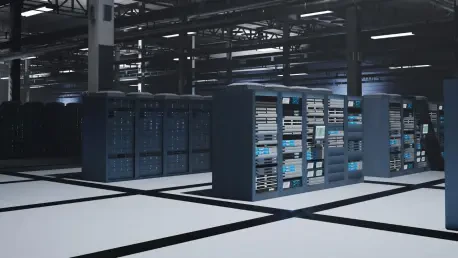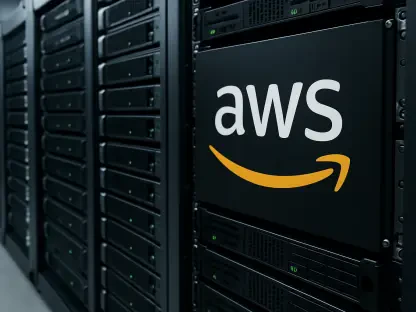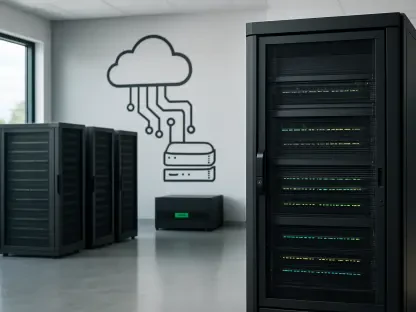In a rapidly evolving landscape of data management and cloud computing, Snowflake’s data warehousing solutions have become pivotal for enterprises looking to harness the power of big data. With the latest advancements, organizations face an important decision between two innovative options: Gen 2 data warehouses and Adaptive Warehouses. This choice is more than just a technical decision; it represents a strategic alignment of business objectives with cutting-edge technology. Gen 2 warehouses promise significant performance enhancements, providing up to 2.1 times faster analytics capabilities, which can drastically accelerate decision-making processes by quickly turning vast amounts of data into actionable insights. Meanwhile, Adaptive Warehouses introduce the ethos of cloud efficiency by dynamically adjusting resource allocation to optimize computing costs. This flexibility results from Snowflake’s Adaptive Compute technology, drawing parallels to serverless infrastructures used by industry giants like AWS, Google, and Microsoft. However, enterprises must deliberate carefully, as these options cannot be deployed in tandem. Understanding which of these offerings aligns with specific business needs and goals is crucial.
The Power of Gen 2 Data Warehouses
Gen 2 data warehouses are designed for organizations that demand superior speed and performance in their data processing tasks. The technology leverages enhanced hardware and software architectures to achieve remarkable improvements in analytics and data manipulation processes. For businesses operating in sectors where rapid data processing is non-negotiable, such as finance or real-time reporting, this option offers the assurance of high-speed capabilities. The benefits extend beyond just speed; Gen 2 also offers stringent control over performance parameters, allowing enterprises to finely tune their processing environments to meet specific workloads. However, this comes at a cost, as flexibility in resource management is less pronounced compared to Adaptive Warehouses. Enterprises opting for Gen 2 will find themselves investing more in hardware resources but will benefit from consistent, predictable performance metrics that support mission-critical operations. The robust performance profile of Gen 2 can act as a competitive differentiator in data-intensive industries where every millisecond counts, ensuring businesses remain at the forefront of efficiency and speed.
Flexibility and Cost Efficiency with Adaptive Warehouses
On the other hand, Adaptive Warehouses embody a modern approach to data warehousing, focusing on flexibility and cost-efficient resource management. Snowflake’s Adaptive Compute technology allows these warehouses to automatically adjust computing resources based on current data demands, significantly reducing the need for manual configuration by cloud administration teams. This adaptability aligns well with organizations that prioritize operational efficiency and seek to minimize overhead costs associated with resource management. By integrating seamlessly with serverless infrastructure models, Adaptive Warehouses facilitate dynamic scaling, making them ideal for businesses with variable workloads or those engaged in development and testing phases. Unlike Gen 2, they enable businesses to redirect resources efficiently without constant oversight, thereby reducing human error and enhancing response times to changing data requirements. The transition from private preview to full availability comes with Snowflake offering best practice guidelines, helping organizations maximize the potential of this automated solution. Although they may not be suited for long-running processes, Adaptive Warehouses provide immense scalability for non-critical applications, supporting a wide range of business operations under fluctuating data demands.
Making the Strategic Decision
Choosing between Gen 2 and Adaptive Warehouses requires a nuanced understanding of an organization’s specific data management needs and long-term objectives. The decision mirrors a strategic investment in either high-speed performance or cost-efficient flexibility. Gen 2’s advancement in performance makes it ideal for enterprises that cannot compromise on speed and demand rigorous control over their data processing environments. In contrast, Adaptive Warehouses align with market trends favoring elastic, serverless computing, catering to businesses where flexibility and cost savings are paramount. Analysts liken Gen 2’s performance enhancements to a high-octane engine, providing the raw power necessary for data-heavy operations. Meanwhile, Adaptive Warehouses function like an autopilot, where automation takes the lead in optimizing resources. Current infrastructure limitations make it necessary for businesses to opt for one approach over the other, emphasizing the need for companies to prioritize either immediate performance upgrades or long-term resource management efficiencies. As organizations navigate this decision, they must weigh the implications of each option on their operational scale, growth trajectory, and the nature of their data workloads.
Looking Ahead: Aligning Technology with Business Strategy
In today’s fast-paced world of data management and cloud computing, Snowflake’s data warehousing solutions have become essential for companies aiming to leverage big data effectively. With recent advancements, businesses face a crucial decision between two groundbreaking options: Gen 2 data warehouses and Adaptive Warehouses. This isn’t merely a technical choice; it signifies a strategic alignment with advanced technology and business goals. Gen 2 warehouses offer remarkable upgrades, promising up to 2.1 times faster analytics, significantly speeding up decision-making by converting large data sets into actionable insights quickly. On the other hand, Adaptive Warehouses bring cloud efficiency to the forefront, dynamically reallocating resources to optimize computing costs. Snowflake’s Adaptive Compute technology makes this possible, drawing similarities to serverless setups utilized by giants like AWS, Google, and Microsoft. The decision is complex as these options can’t be used together. Evaluating which option aligns best with a company’s specific goals and needs is vital for success.









